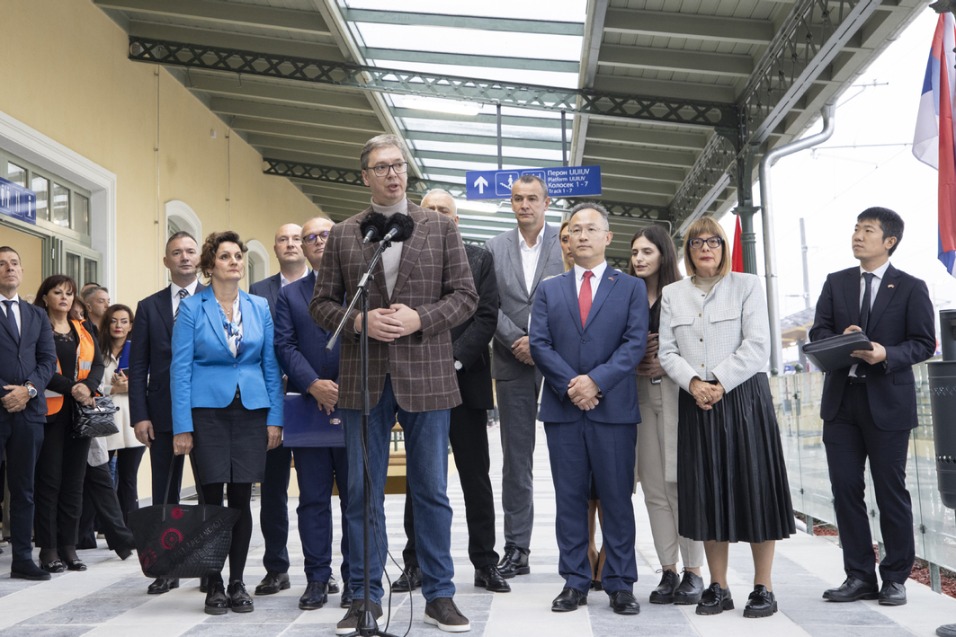Experts' views on 'silver economy'
By Stuart Gietel-Basten, Wang Jinying, Li Jia | China Daily | Updated: 2024-01-29 06:53
Eldercare services a fast growing industry
By Li Jia
As China charts its course toward high-quality development, developing the "silver economy" has emerged as a pivotal strategy to facilitate that process. Following the emphasis laid on the "silver economy" in key national meetings, the State Council, China's Cabinet, issued the "Opinions on Developing the Silver Economy to Enhance the Well-being of the Elderly" on Jan 15, making it the first dedicated document supporting the development of the "silver economy".
But what exactly is the "silver economy"? And how does it relate to concepts such as market-oriented elderly services, elderly service industry, eldercare industry, aging economy and "silver market"?
Depending on the timing, background, terminology and content of policy documents, the development of the concepts related to the "silver economy" can be divided into four stages.
Year 2000: Socialization and marketization of elderly services. At the end of 1999, the number of people aged 60 or above exceeded 10 percent of China's total population, marking the beginning of an aging population. The focus then was on addressing the pressing issues of inadequate and somewhat mediocre eldercare services. In August 2000, the Central Committee of the Communist Party of China and the State Council issued the "Decision on Strengthening Aging Work", which encouraged social and market entities to participate in the eldercare industry, and promote the socialization and marketization of services for the elderly.
Year 2006: Eldercare services. In 2005, the number of people aged 65 or above exceeded 100 million, with more than 13 million of them aged 80 or above. The State Council's General Office released the "Opinions on Accelerating the Development of Elderly Care Services" in February 2006, which for the first time mentioned the term "elderly care service industry". The document extended the focus beyond elderly care services to include products for elderly people, promoting the development of the market for products for the elderly.
Year 2012: Elderly care industry. As China's working-age population peaked at 940 million in 2012, the population aged 60 or above approached 200 million, constituting a significant percentage of the total population. In July 2012, the Ministry of Civil Affairs issued the "Implementation Opinions on Encouraging and Guiding Private Capital to Enter the Elderly Care Service Industry", mentioning the term "elderly care industry" for the first time and outlining eight main components of the industry.
Year 2020: Silver economy. The term "silver" refers to gray hair, often used as an elegant term for the elderly. In the 1970s, Japan coined the term "silver generation" to avoid the negative connotation of the word "old". At the turn of the century, Western countries, too, introduced terms such as "silver economy", "gray-hair economy", "longevity economy" and "silver market". In 2018, China witnessed a demographic turning point, with the elderly population surpassing the population aged 0-15. In October 2020, the CPC Central Committee's report made addressing the population aging problem a national policy. And the Outline of the 14th Five-Year Plan for National Economic and Social Development and the Long-Range Objectives Through the Year 2035 marked the inception of the term "silver economy".
The ongoing journey from social services to economic advancement: Analyzing the policy evolution, it's evident that the above concepts, while closely related, are substantially different. The progression from social services to economic development reflects a better understanding of population aging, following a "social services-industry-economy" trajectory.
While socializing and marketizing eldercare services are aimed at addressing the basic needs of the elderly, the focus on the "silver economy" has extended to include diverse services such as healthcare, culture, and law, meeting the multifaceted needs of the elderly. This distinction highlights the difference between the concepts of "elderly" and "aging".
The "elderly care industry" and "anti-aging industry" were instrumental in forming complete domestic production and supply chains, encouraging more market entities to provide mature, better and diverse products or services for the elderly. The "silver economy" has helped promote economic and social sustainability, and highlighted the impact of the changing demographics on various economic activities.
The recently issued "Opinions on Developing the Silver Economy to Enhance the Well-being of the Elderly" marks a groundbreaking shift, defining the "silver economy" as a holistic sum of economic activities to address the population aging problem and calling for making preparations to meet the needs of a larger aging population in the future. It covers a broad range, has substantial potential and calls for a more inclusive approach to development, beyond mere elderly services or the eldercare industry.
In conclusion, the comprehensive understanding of the silver economy's policy evolution will help local authorities and businesses to transcend the limitations of earlier concepts and develop a mature, advanced eldercare industry. By unleashing the full potential of the eldercare market and facilitating collaboration between dynamic markets and proactive governments, the State Council document can help accelerate the standardized, clustered and branded development of the "silver economy".
The author is deputy head of the Aging Society Research Center at the Pangoal Institution.
The views don't necessarily reflect those of China Daily.
























